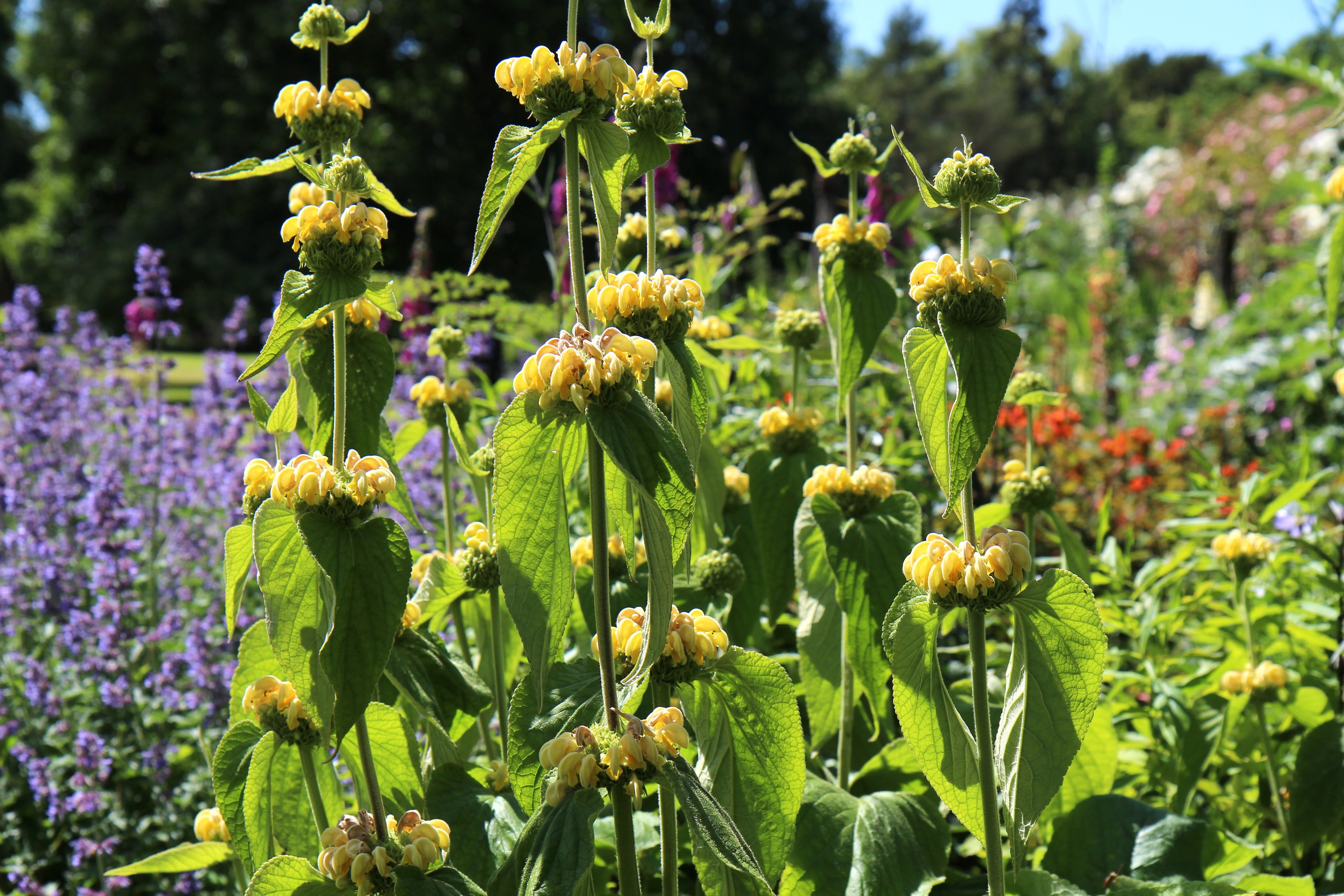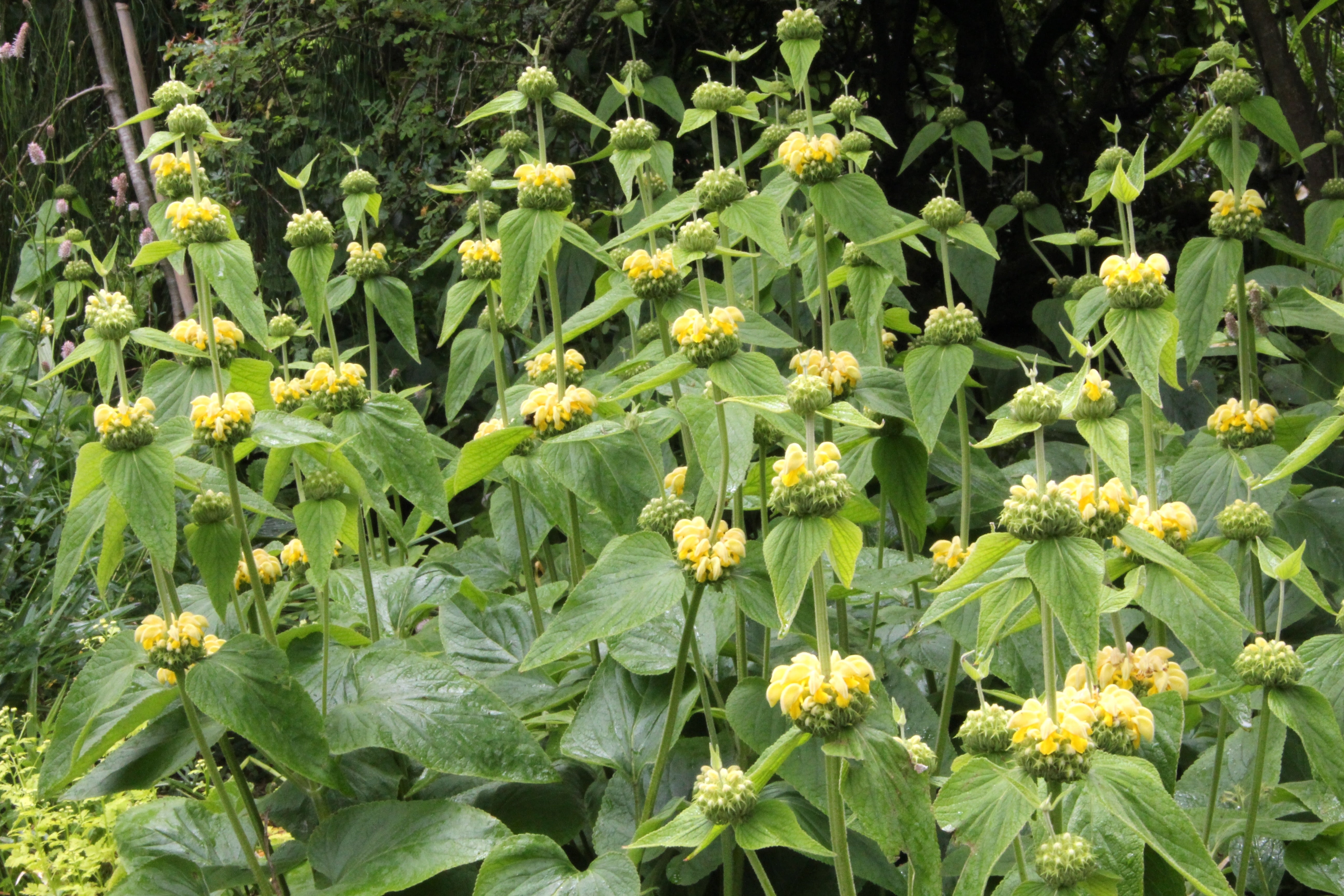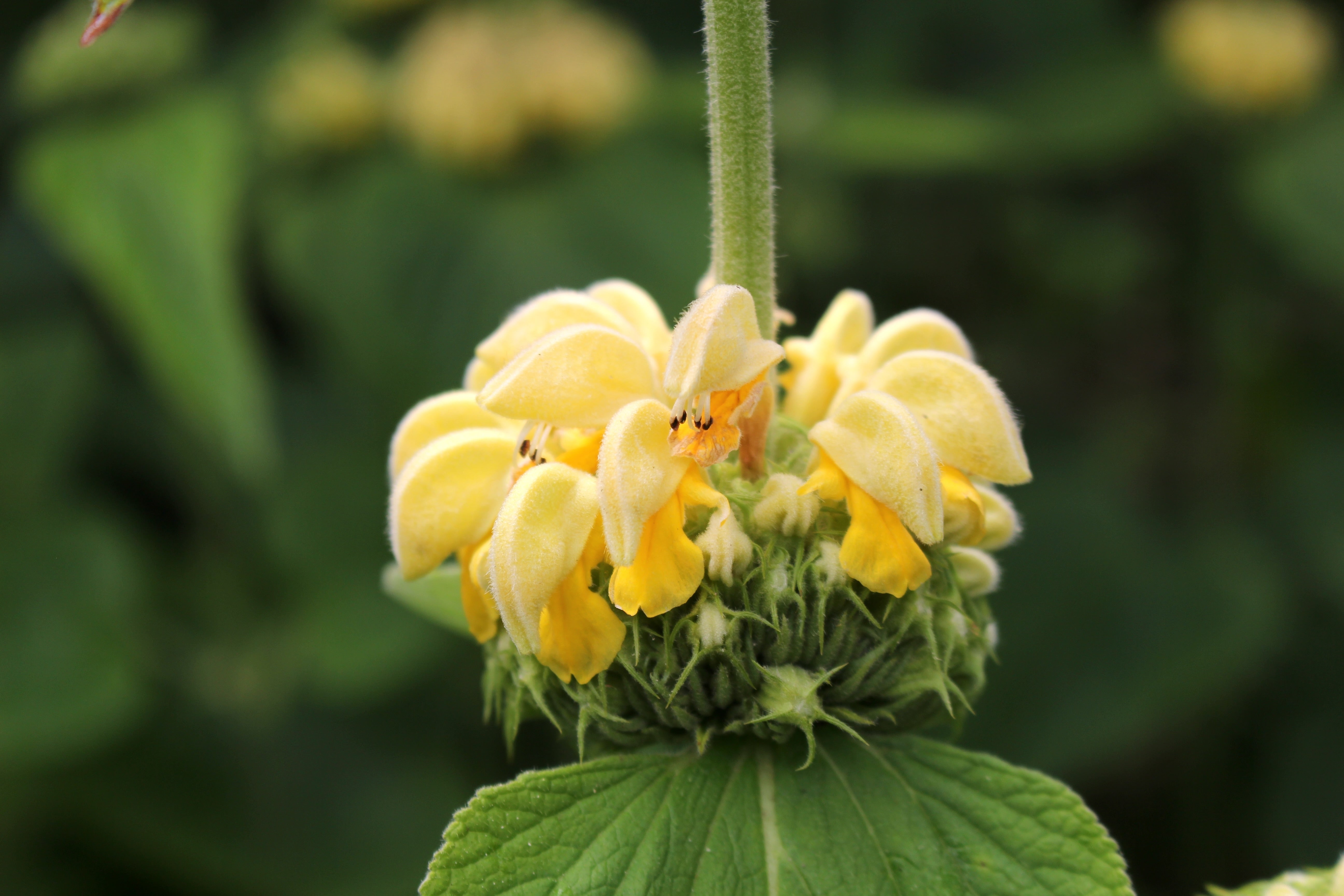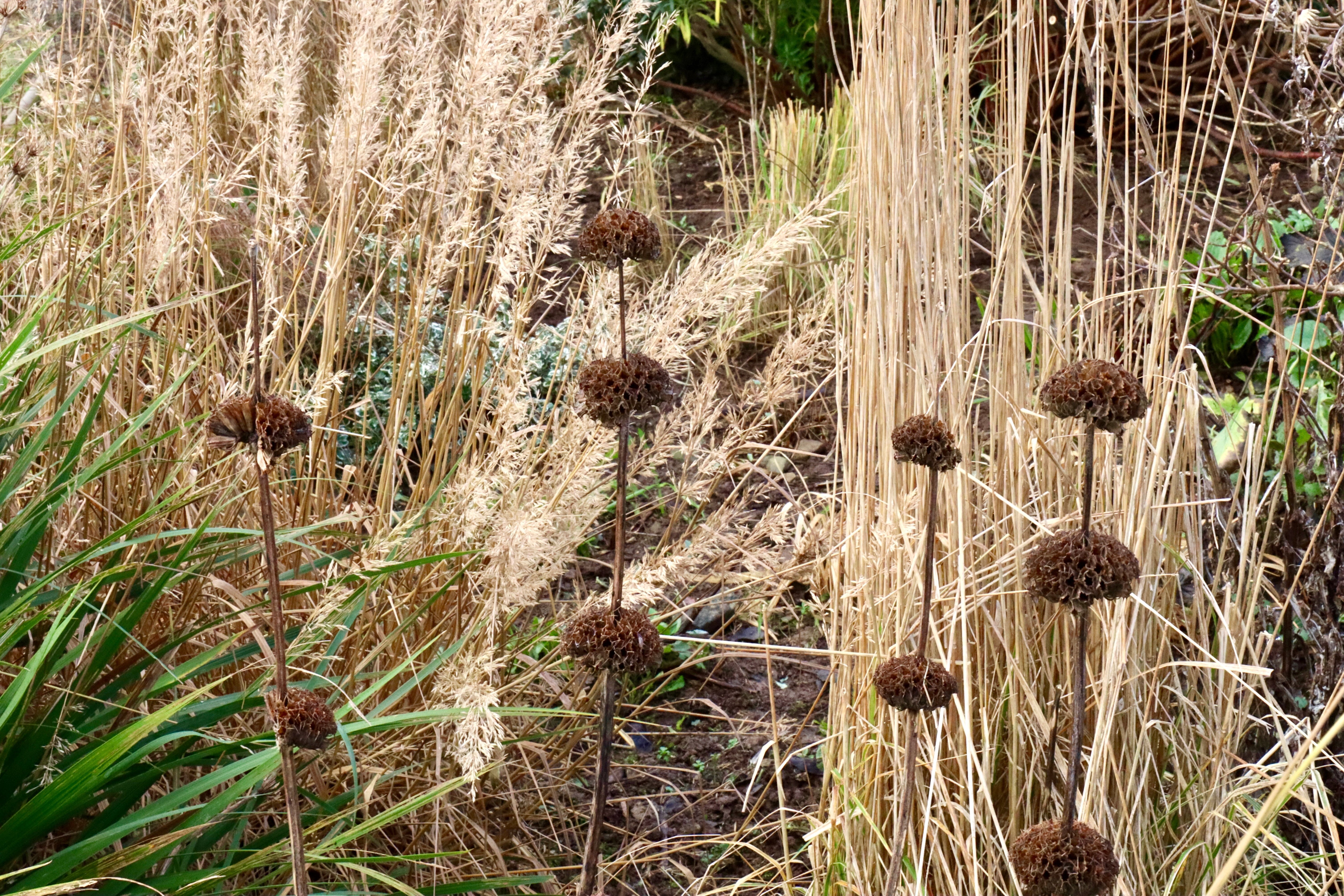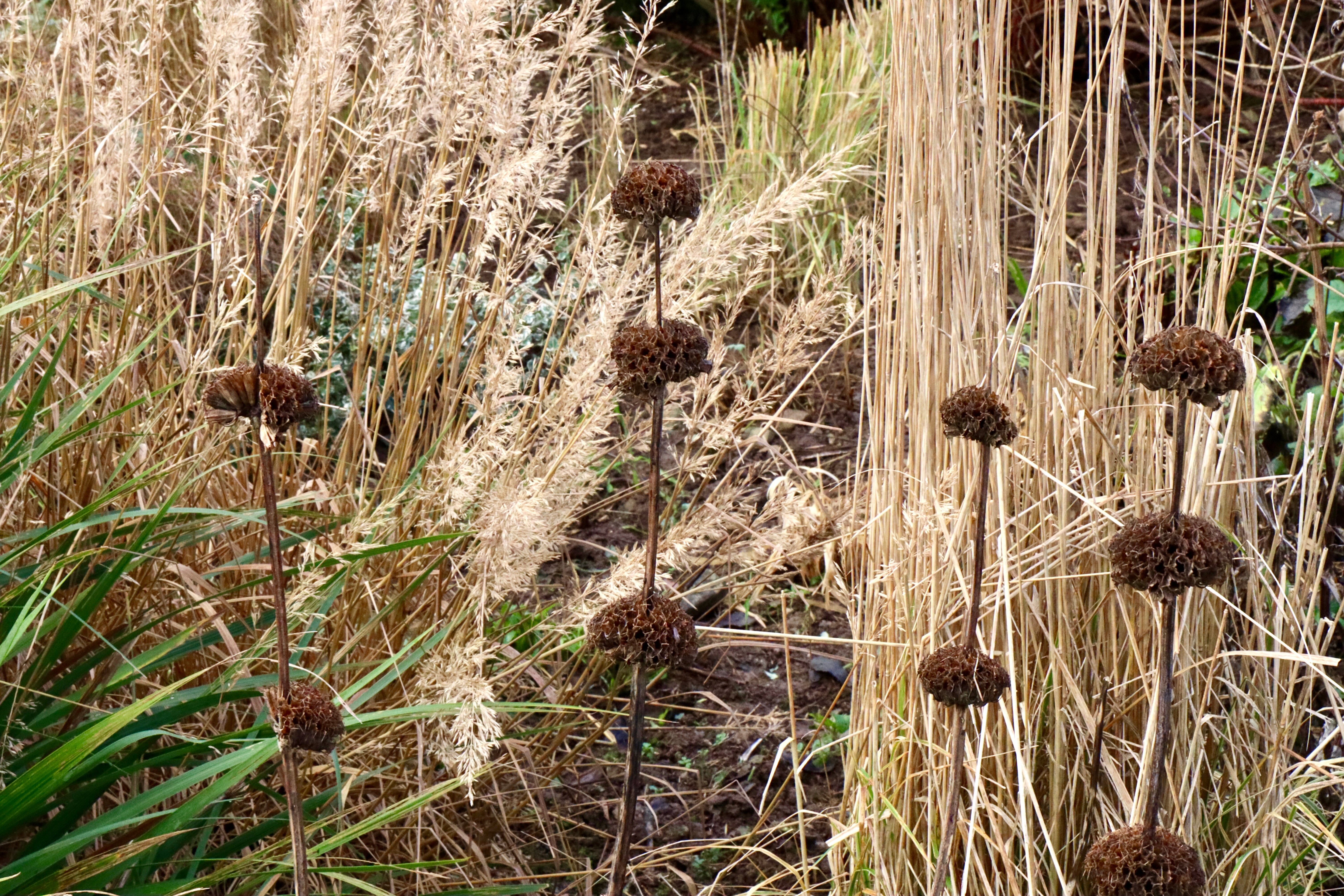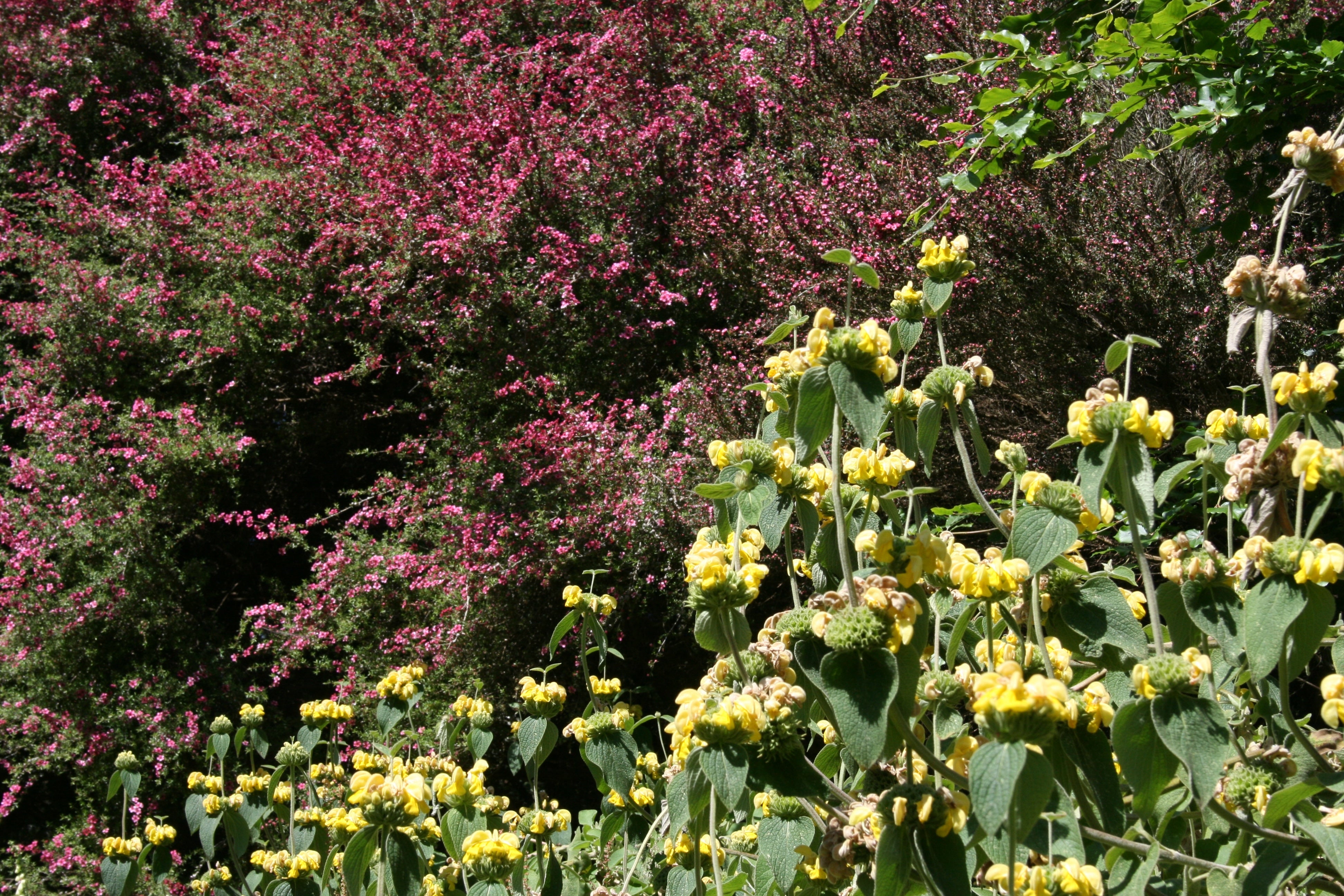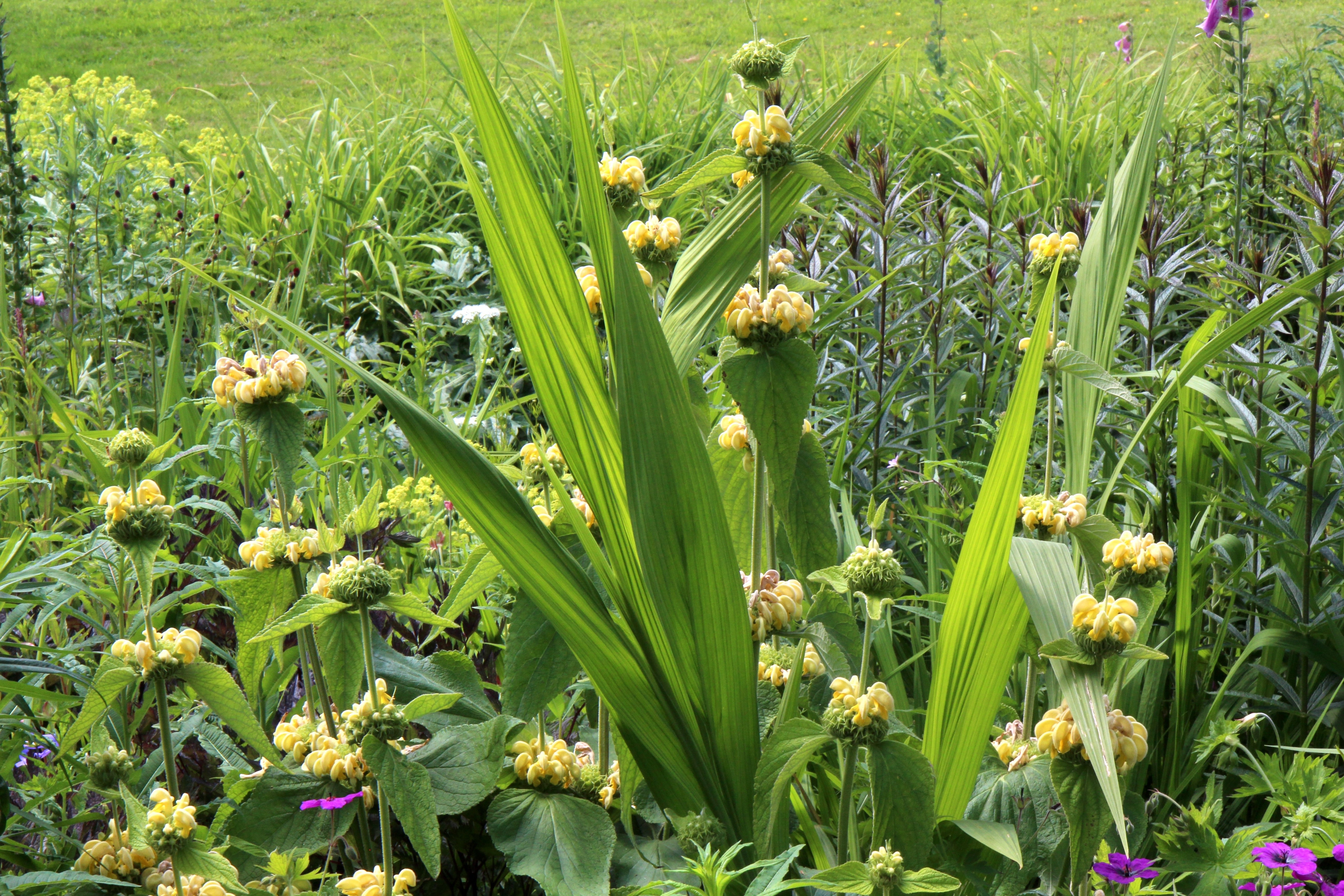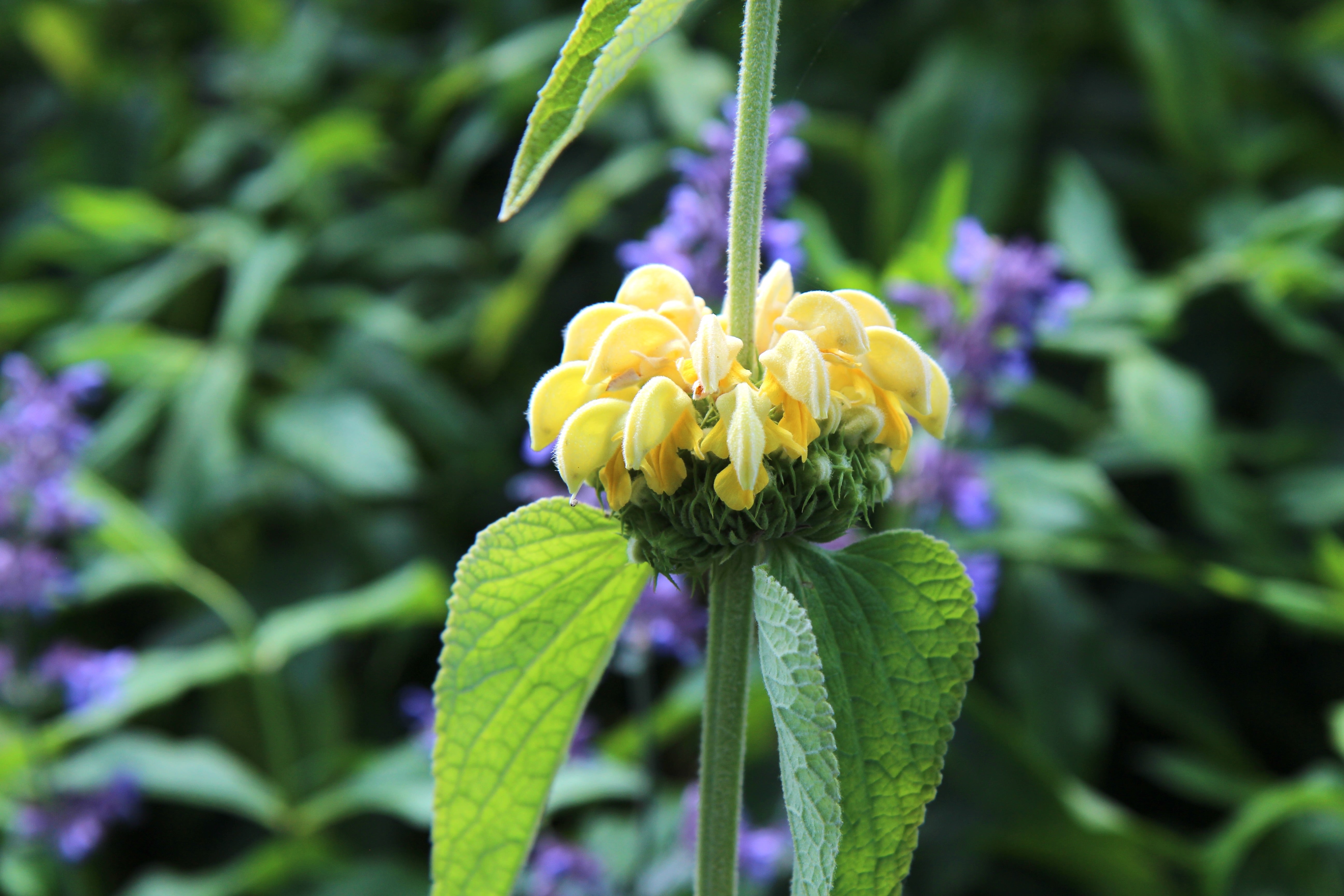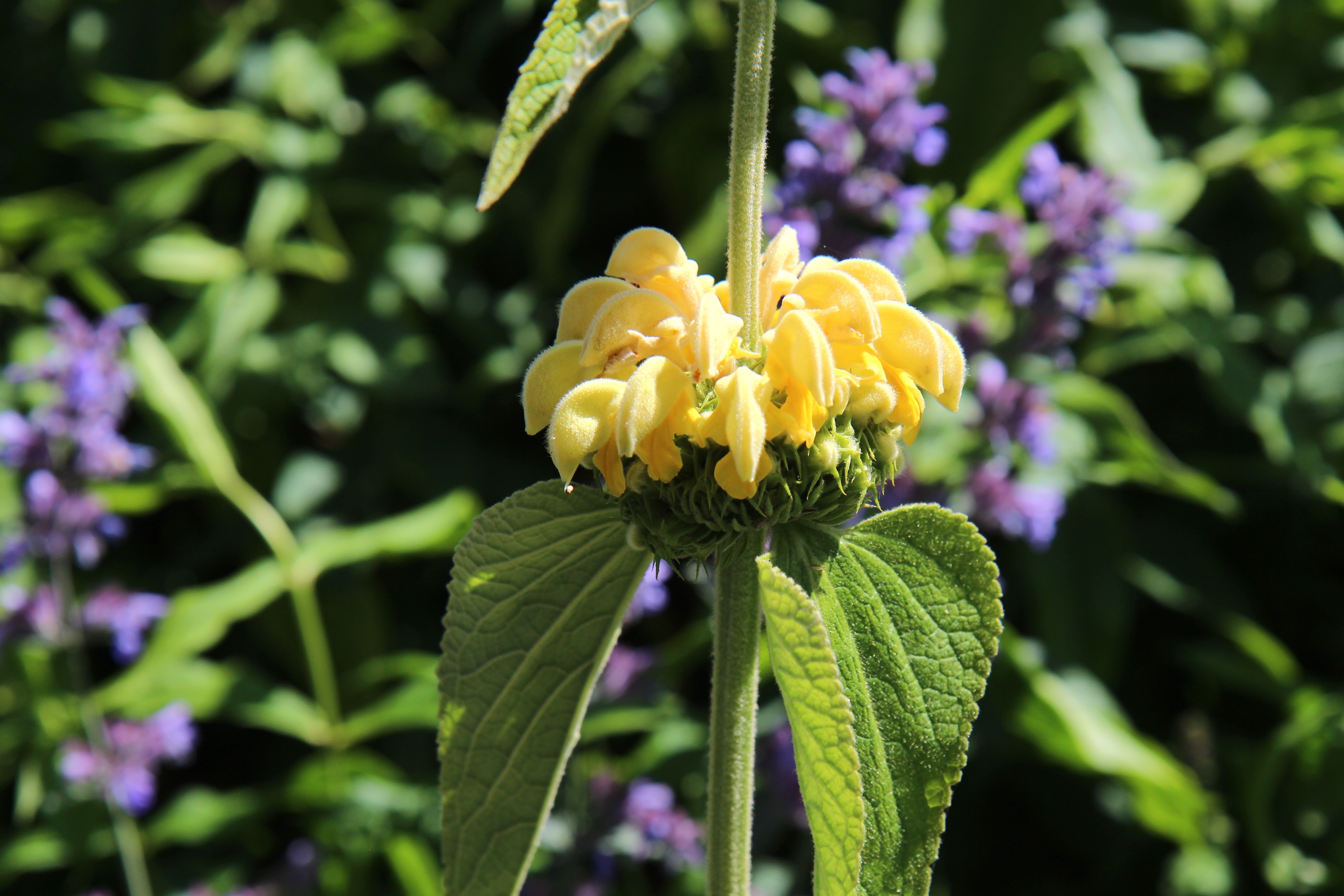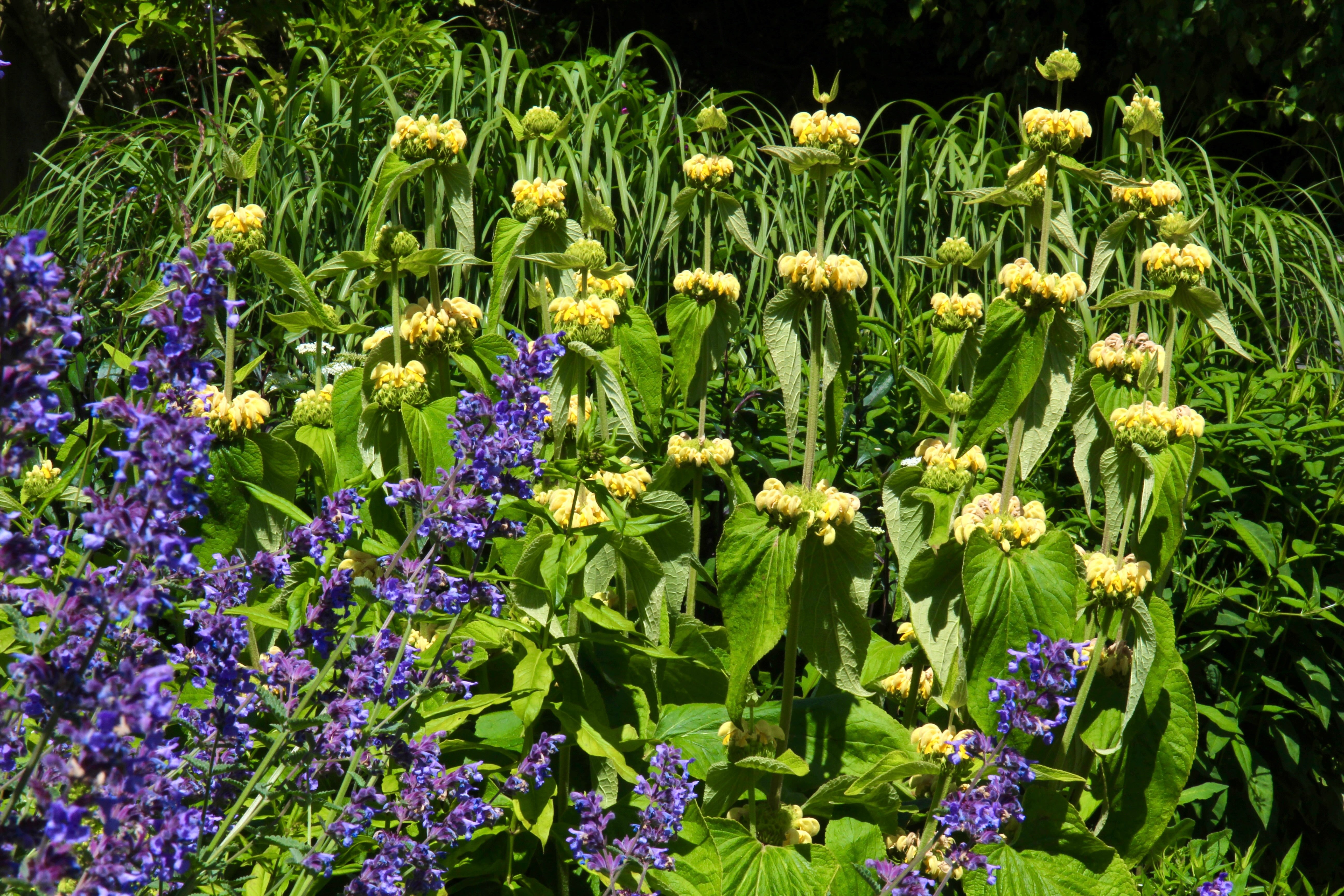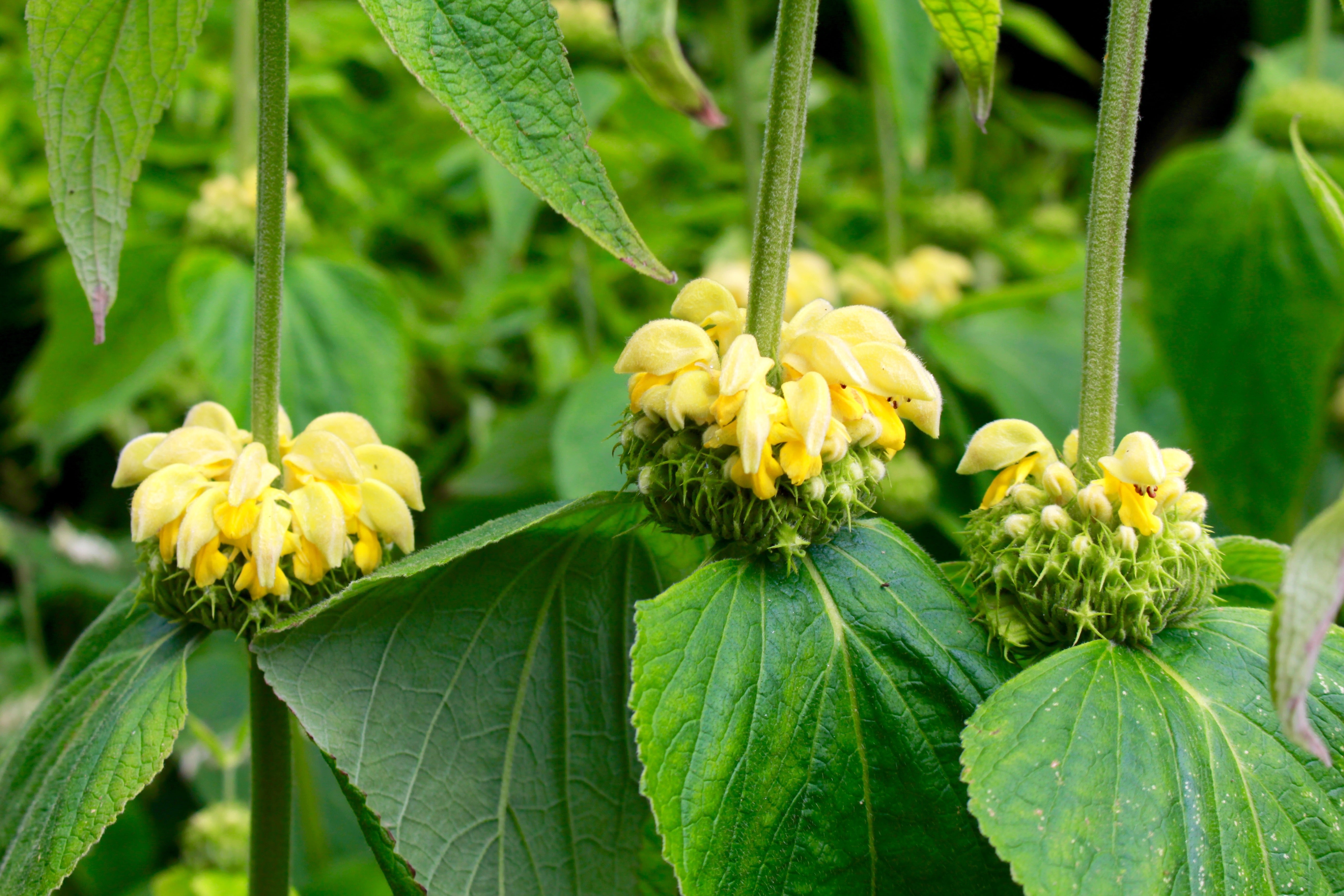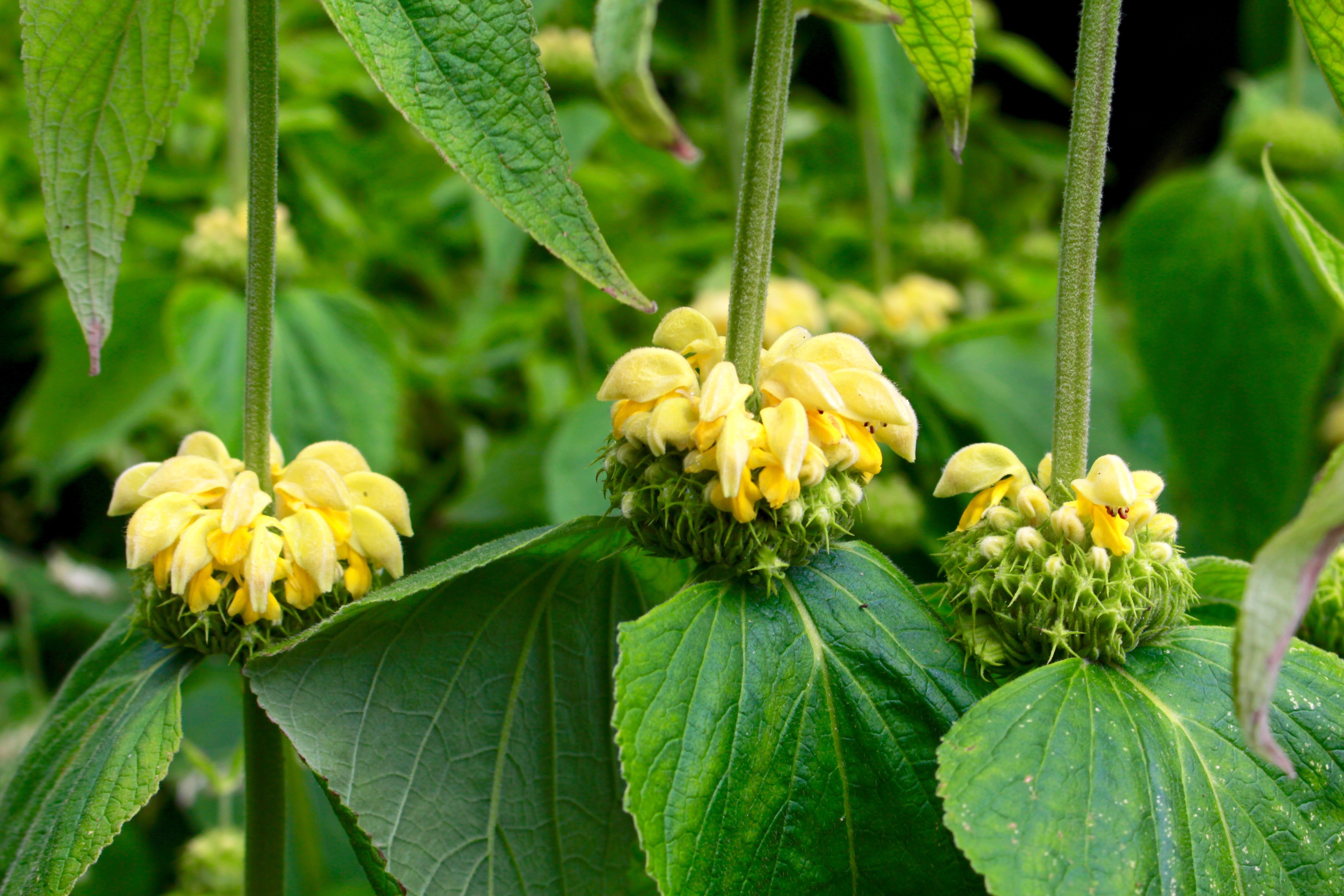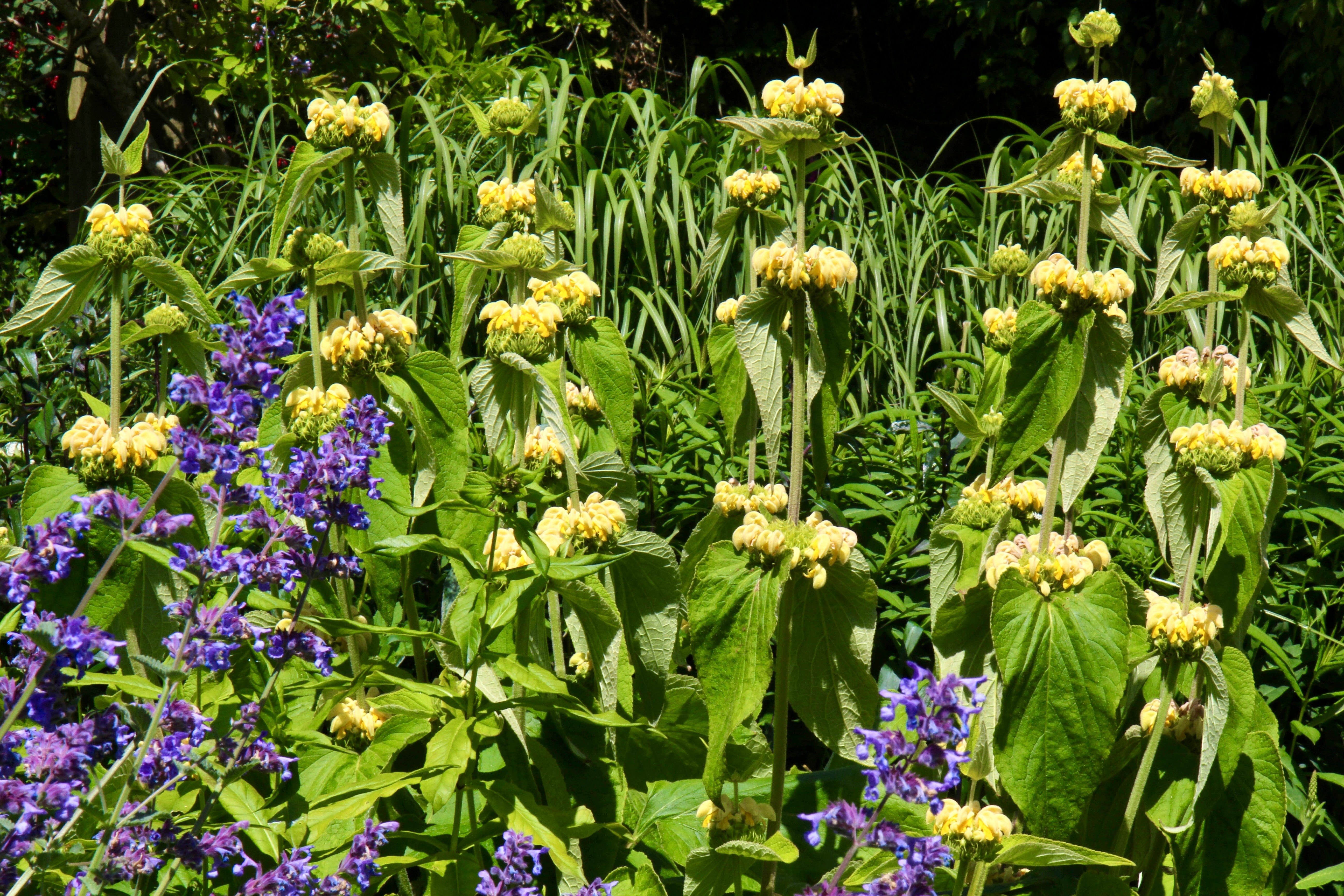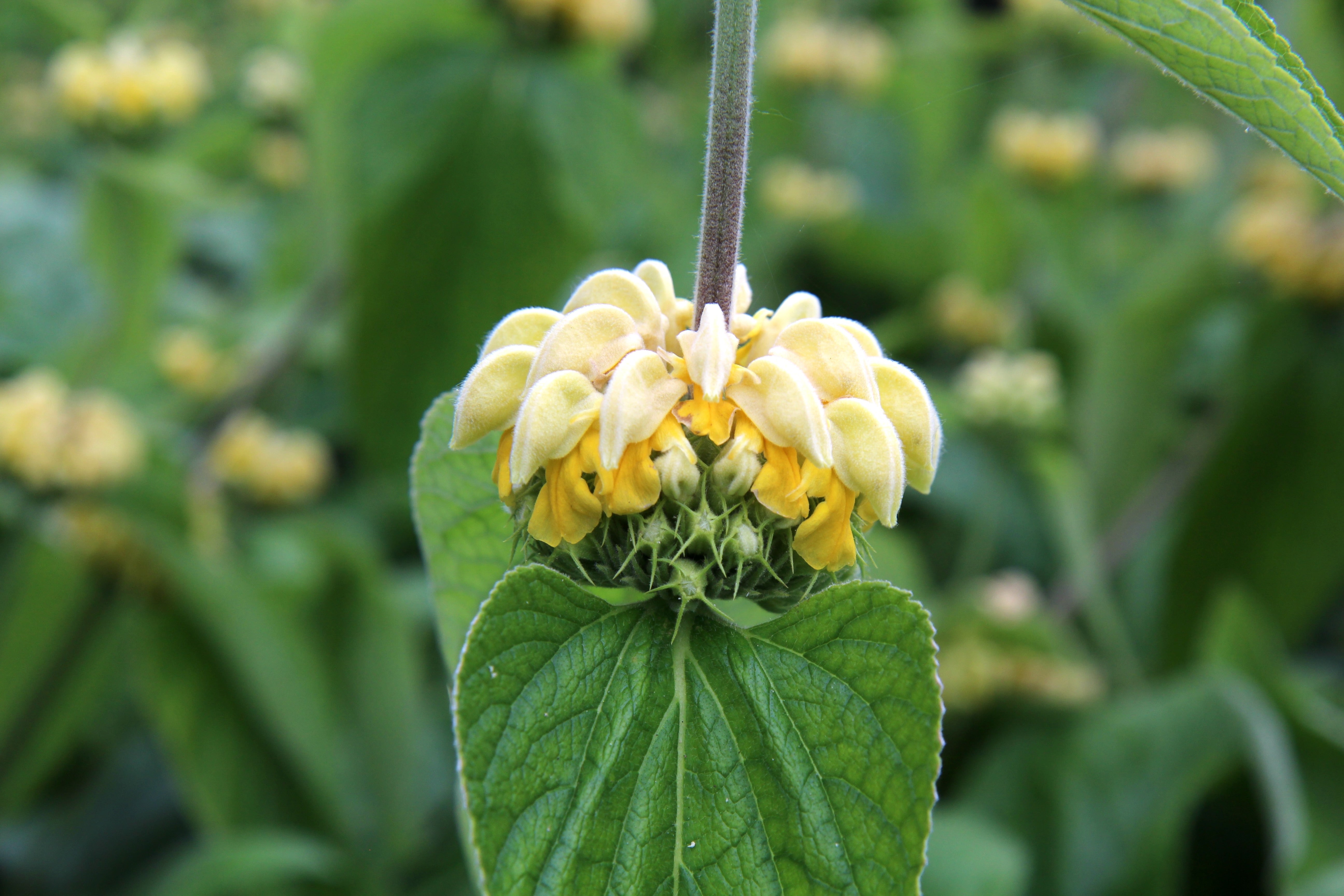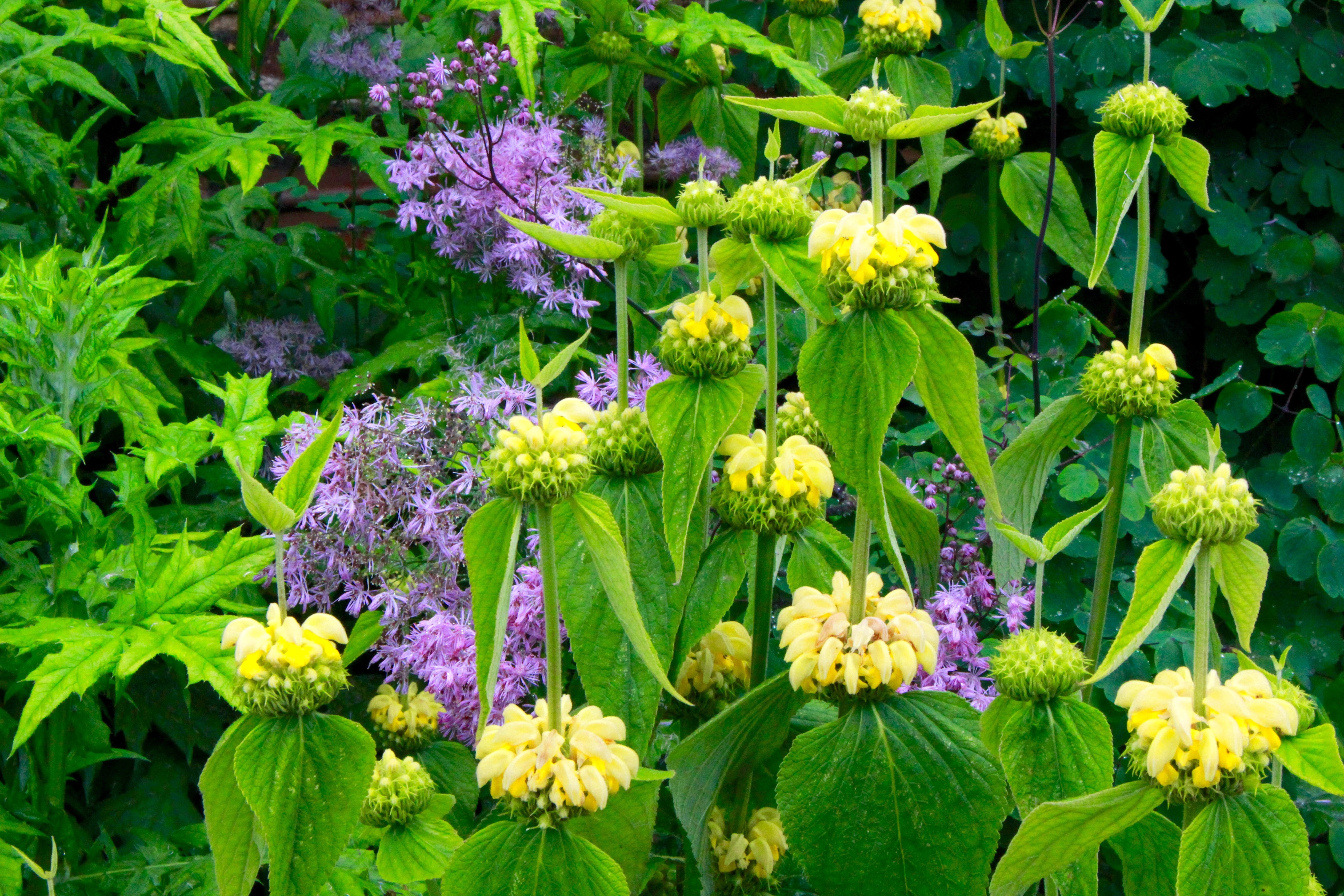Phlomis russeliana
Approx. 0.5 litre pot
About this cultivar:
Phlomis russeliana originally bore the name Phlomis lunariifolia var russeliana, a title bestowed upon it by the English botanist John Sims in 1825.
Its common moniker, Turkish sage, evokes visions of sun-drenched hillsides and the aromatic breeze of the Mediterranean. But guess what, it also grows in Ballyrobert!
Close your eyes and picture this: sturdy stems reaching skyward, adorned with whorls of soft, felted leaves, reminiscent of a plush tapestry woven by nature herself. Or you can just look at the photos instead..
Clusters of hooded, butter-yellow flowers that adorn its stems from late spring to late summer. Each beautiful bloom a beacon beckoning bees and butterflies to its bounty.
And what's more, Phlomis russeliana is no mere seasonal show-off. When the flowers fade and dry-out its architectural form provides year-round interest, lending structure and texture to the garden even in the depths of winter. Truly deserving of a prime spot in any garden.
It has the Royal Horticultural Society Award of Garden Merit.
More about the species name, if you are interested! Sims introduced this name in Curtis’s Botanical Magazine, detailing a specimen cultivated at Kew. Although he may have confused it with a different plant! He chose this designation as a tribute to the esteemed Scottish physician and naturalist Dr. Alexander Russell (1715-1768), renowned for his work "Natural History of Aleppo." However sometimes you may read the name refers to John Russell (1766-1839) the 6th Duke of Bedford! In any case Phlomis russeliana has stuck for this plant!
- Position: Full sun, partial shade
- Soil: Almost any soil, grows well in Ballyrobert
- Flowers: May, June, July, August, September
- Other features: Royal Horticultural Society Award of Garden Merit (RHS AGM), Grows well in Ballyrobert, Bees and Butterflies
- Hardiness: H6 - Hardy in all of UK and northern Europe (-20 to -15°C), Fully hardy, grows well in Ballyrobert
- Habit: Columnar or Upright, clump forming
- Foliage: Evergreen
- Height: 60 - 90 cm (2 - 3 ft)
- Spread: 30 - 60 cm (1 - 2 ft)
- Time to full growth: 2 to 5 years
- Plant type: Herbaceous Perennial
- Colour: Green, yellow
- Goes well with: Purples - Geranium, Campanula, Nepeta, Thalictrum, Verbena
About this genus:
Phlomis is a genus of over 100 species of herbaceous plants, subshrubs and shrubs in the mint family Lamiaceae. Commonly known as Jerusalem sage or lampwick plant, the botanical name derives from a Greek word for ‘flame’ and may refer to the leaves' use in ancient times as the aforementioned lamp wicks. It was also a name the Greek physician Dioscorides devised to describe a group of plants. Both could be referring to he same plant!
Native to regions stretching from the Mediterranean to central Asia, Phlomis species are renowned for their striking appearance and adaptability to various climates. Even the Ballyrobert climate…
Whorls of hooded, tubular flowers coming in various colours, including yellow, pink, purple, and white, are clustered in groups called verticillasters, which encircle the stems. The stems are usually square in cross-section with rounded corners. However, they may appear circular due to the presence of dense hairs covering them.
The leaves of Phlomis are simple, meaning they are not divided into leaflets, and they are arranged in pairs opposite each other on the stem. Their foliage is often adorned with felt-like or woolly texture, adding to their ornamental value in gardens and landscapes.
Of course you will read that Phlomis, as Mediterranean natives, tend to thrive in sunny to partially shaded locations with well-drained soil. And you will read they are particularly suited to dry or rocky landscapes, making them popular choices for xeriscaping or Mediterranean-style gardens. This is true, BUT, the selection of Phlomis we have growing at Ballyrobert are multi-talented and perform well in our not-so-well-drained not-so-Mediterranean garden. Witness the photographic evidence! We have tried a good few and are confident the selections we offer will grow in most places that are not bogs or desserts.
Their architectural form, unusual flowers, and resilience to adverse (particularly dry) growing conditions make Phlomis impactful, versatile, desirable, interesting plants for both novice and experienced gardeners as well as pollinators such as bees and butterflies. We suggest you find a domus for a Phlomis!

